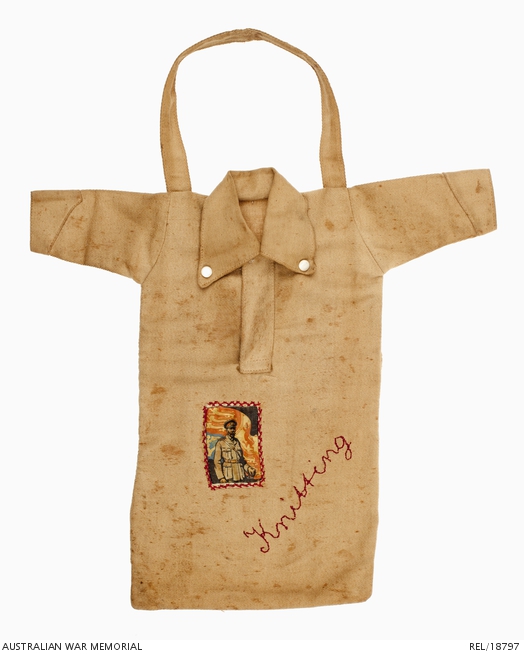Medical evacuation

Over 80 per cent of Australian battle casualties in the First World War occurred on the Western Front. In order to deal with the thousands of wounded men, a system of battlefield evacuation and treatment was developed. Relays of stretcher-bearers would carry the wounded through the difficult terrain, often under shell-fire. It could take many hours for a wounded man to be transported back to the surgeons and nurses at the Casualty Clearing Stations (CCS).
During major battles, the number of casualties could overwhelm the evacuation system. Private Roger Morgan of the 2nd Battalion described the casualties at Pozières on 23 July 1916:
"dead and dying heroes lie one on top of the other, many groan in agony, others just lie still unconscious of all pain … for some time we have been unable to get room inside and have had to dress wounds out in the open on the roadside … Many of them were blown to pieces lying there in the open unable to move."
The wounded on the stretchers are waiting to be taken to the clearing stations while others walk as far as they can. Shortly after this photograph was taken, a shell landed roughly where the man with the sling is standing, killing most of the wounded on stretchers. E00711
“Thigh deep in mud”
"Conditions are almost impossible for bearers to efficiently evacuate wounded from the front … Trenches are in very bad condition, in places thigh deep in mud so that bearers carry in the open under shell fire continually. It is almost impossible for bearers to keep their feet in the slippery mud."
Improvised signs were used direct lightly wounded men to the nearest Regimental Aid Post. RELAWM00756
Sister Alice Ross-King
"I asked him to return to bed so I leant across the stretcher and put one arm under him and tried to lift him in. I had my R[ight] arm under a leg which I thought was Gilmore’s but when I lifted I found to my horror that it was a loose leg with a boot and putty on it. One of the orderly’s legs which had been blown off and had landed on Gilmore’s bed ... I have no very distinct recollection of what followed but apparently I carried on with the job. The bombing happened at 10.30 pm and when I next remember clearly it was early daylight and Fritz was coming over again."
Alice Ross-King enlisted in the Australian Army Nursing Service in November 1914. After serving in various hospitals in Egypt and on hospital transport ships throughout 1915, she was sent to France in early 1916. The following year she was transferred to the Australian No. 2 CCS, close to the trenches at Trois Arbres near Armentières.
On the night of 22 July 1917, 2 CCS was attacked by German aircraft. Eyewitness accounts describe nurses running to tents shattered by bombs to rescue patients, either carrying them to safety or placing tables over patient’s beds in an effort to protect them. Four nurses, Alice Ross-King, Dorothy Cawood, Mary Jane Derrer, and Clare Deacon, were awarded the Military Medal for their actions that night. Sister Ross-King wrote a detailed account of the attack in her diary.
Clean, dry socks
Many soldiers were evacuated from the front line suffering with trench foot. Prolonged exposure to damp, unsanitary, and cold conditions caused boils and sores, which could lead to fungal infections, gangrene, and even amputation. Keeping one’s feet dry and regularly changing one’s socks were two ways to help stop the spread of trench foot.
Soldiers suffering from trench foot during the winter of 1916. They are being carried to a transport that will take them to hospital. E00081
Some of the thousands of Australian schoolchildren who knitted socks for the soldiers at the front. H11581
Gifts from home
Stitch by stitch our knitting grows
While we think of the German foes
Who are fighting our brave lads
Just because of the Kaiser’s fads.
Many people sewed or knitted warm clothing – including socks – for family and friends at the front. Knitters often included notes or poems with the items they made. Sometimes a correspondence would develop with the soldiers which could continue through the war.
"I hope you will not be disappointed that the socks did not reach a soldier, but a sailor instead."
Sailors also received hand-knitted socks. Ordinary Seaman Roy Vayne received a pair made by eight-year-old Marjorie Mitchell. Children knitted socks in their own time or as part of school or group activities.






